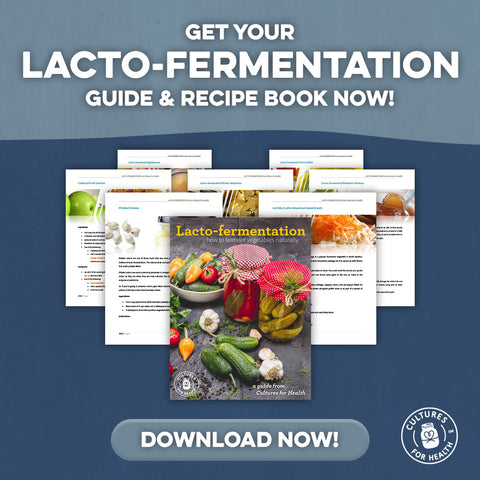If you’ve hung out in the world of cultured foods for very long you have probably heard of beet kvass. It is a popular tonic listed in the book Nourishing Traditions. It is made simply with beets, water, salt, and an optional starter culture of whey. It is slightly sour, earthy, and not exactly something you drink because you can’t get enough of the taste. But there is another type of kvass, a bread-based kvass, that also hails from Russia. If you scour the internet for recipes you can find about a hundred with some combination of bread, yeast, water, and optional fruits and sugars. I knew that kvass had to have been born out of necessity, though. And because of that I wondered if the yeast, something that wasn’t available for much of history, was a new addition. Turns out it was, and you can make it perfectly well without it.

The trouble is, it is very difficult to find accounts of kvass making without the commercial yeast added. I did find a few sources, however, the most exciting of which was a sweet Russian woman who was able to translate some of the Russian text for me.
The Basics of Kvass
Kvass is considered a lacto-fermented beverage with a very low alcohol content, depending on how you make it. It appears to have been traditionally made with a
sourdough bread made from either rye or wheat – depending on what was available. There were many additions, depending on what was available. Honey and fruits seem to be common and would impart a sweetness to counteract the naturally sour beverage. Herbs were also used. Kvass would have been made different from home to home and in each home from season to season. Kvass was made as a tasty and healthful addition to the Russian diet. Whether there was bread or flour or raw grain, kvass could and would be made.

From Bread
Now the yeasts in the sourdough bread should theoretically be dead, so the process would involve catching wild yeasts and bacteria which would feast on the sugars in the bread, producing a tangy carbonated beer-like beverage. Dan Woodske, in his book
Kvass, quotes an English translation of the book
Domostroi: Rules for Russian Households in the Time of Ivan the Terrible: “Take four parts honey and strain it until it is clear. Put it in a jar and ferment it using an ordinary soft loaf, without additional yeast. When it is done, pour it into a cask.”

From Sprouted Grains
In one preparation method, which I am told is quite common, a solod – mass of sprouted grains – was used.
These sprouted grains would contain enzymes and bacteria that would go to work on the other sugary elements added to the kvass – bread, honey, flour, or fruit. Once sprouted, the grains can be roughly ground into a dough and added to the pot of kvass.
From Flour
If one had only flour, or preferred the flour method, then it could be made with flour, fruits, honey, and herbs. This is much like creating a sourdough starter in that you are capturing wild yeasts and bacteria which then feast on the flour and sugars.
From Sourdough
To jump start the process, and assuming one had a sourdough starter around, they could replace the flour in the above concept with a sourdough starter. This would immediately give the brew an established colony of yeasts, acids, and bacterias which might guarantee a more precise outcome. If the same sourdough starter was used over and over, you would end up with more similarities from batch to batch.

Conclusion
All of these could be made simply, without any additional culture or yeast product. The grains could have been harvested by hand and the fruits from local trees. The point is that this is a great example of fermentation practiced by our ancestors in which no special equipment or ingredients are needed.





















